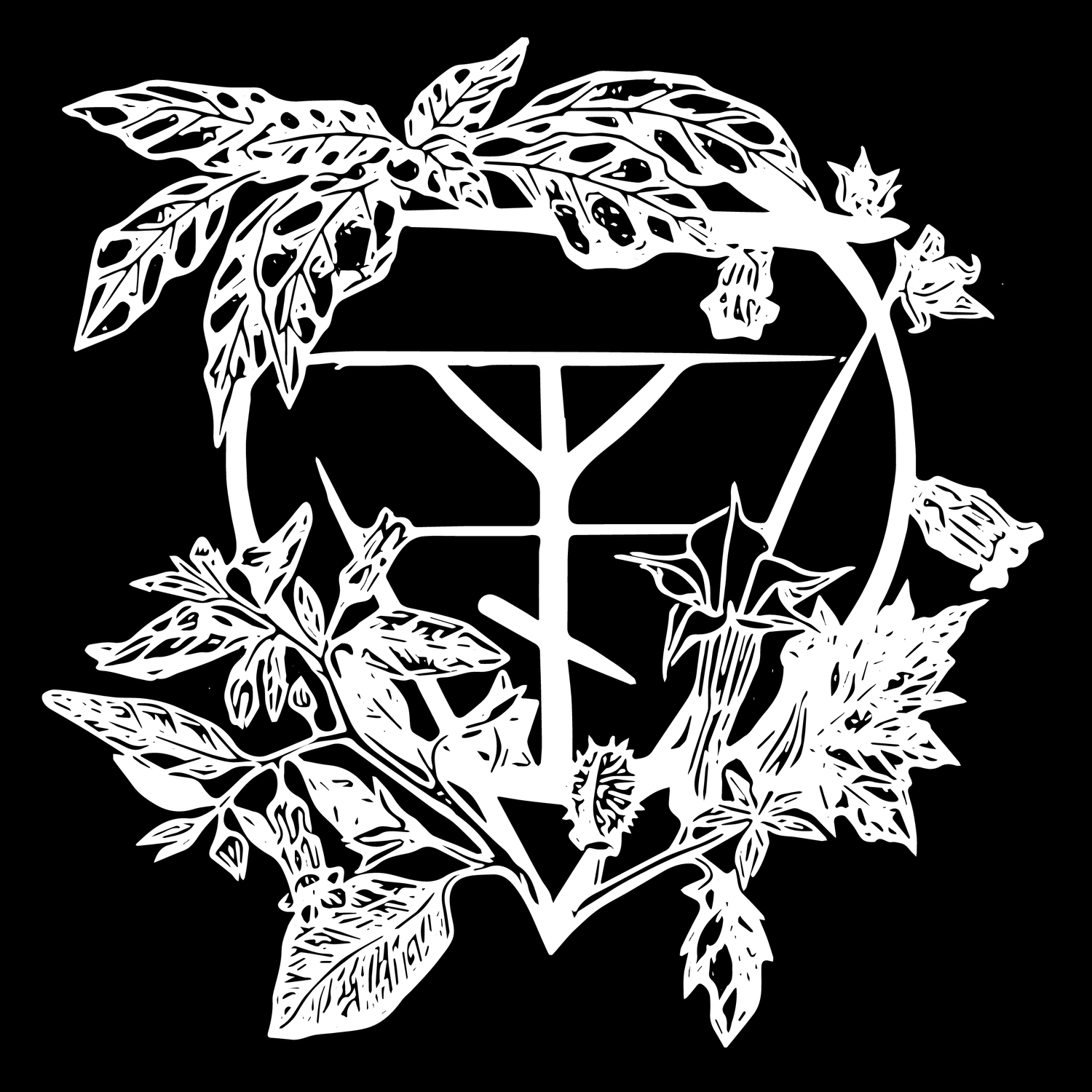Plant Profile: Deadly Nightshade
Deadly Nightshade
Atropa belladonna
Common names: banewort, toad flower, great morel, belladonna, sleeping nightshade, devil’s cherry, devil’s berry, solanum lethale, wolf’s berry, hexenbeere, satanskraut, tolkirsche, todeskraut
Medicinal Uses: (for educational purposes only) used as an ancient anesthetic, analgesic (pain relieving), anticholinergic (effects neurotransmitters controlling involuntary muscles and smooth tissues, mydriatic (dilates pupils), reduces bodily secretions including saliva and urine (used for digestive issues & during surgery), used to treat various skin ailments, used as a liniment and plaster for pain relief, used in asthma cigarettes known as Asthmador. In smaller doses, belladonna is more sedative and pain relieving, at higher doses you can experience acute anti-cholinergic syndrome and delirium. Belladonna is a poisonous plant and there have been many deaths linked to it!
“Red as a beet, blind as a bat, hot as a hare, and dry as a bone.” This saying describes the symptoms of acute anti-cholinergic syndrome, or poisoning from tropane alkaloids. The skin becomes red and flushed and warm to the touch. The pupils become dilated causing sensitivity to light, and the muscles in the eye become paralyzed resulting in cycloplegia. This causes blurred vision and makes it impossible to focus. All of your bodily secretions dry up, leaving you with the worst cotton mouth of your life. The smooth muscles of the bladder are also paralyzed, making it impossible to urinate, which is very uncomfortable.
Deadly nightshade does have psychoactive properties, but they are different from psychedelic hallucinogens like LSD or magic mushrooms. Hallucinations with belladonna are almost always described as dark and sinister in nature with an overwhelming sense of foreboding. This is only at higher dosages. Belladonna is a deliriant, not a hallucinogen. While hallucinations are possible, there is also an amnesic effect and the person is not aware that their perception has changed because there is a dissociation from what is going on around them.
Alkaloids: The entire plant is approximately .3-.6% tropane alkaloids. It is predominantly l-hyoscyamine, which is converted into atropine in vitro and through drying. It is atropine or dl-hyoscyamine that is responsible for belladonna’s effects. Apoatropine and many other tropane alkaloids are also present.
Magical and Ritual Uses: hexing, seduction, glamour magic, fascination spells, influence & compelling, spirit flight, underworld descent, protection & battle magic, dark goddesses, chthonic deities, spirits associated with witchcraft.
Stone: Onyx
Rulers: Saturn and Water
Tarot Archetype: The Devil
Spirits: Hekate, valkyries, the Norns, the Moirai, the Devil, dark goddesses, chthonic deities, Lilith
Historical Fact: The discovery isolation of atropine led to the discovery of the neurotransmitter acetylcholine. Atropine was isolated in 1831.
Atropa belladonna plant spirit glyph for connecting with the spirit and virtues of deadly nightshade.
References and resources:
Ratsch, Christian. The Encyclopedia of Pyschoactive Plants. Inner Traditions/Bear & Company. 2005.
Lee, MR. Solanaceae IV: Atropa belladonna, Deadly Nightshade. University of Edinburgh. 2007.



